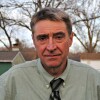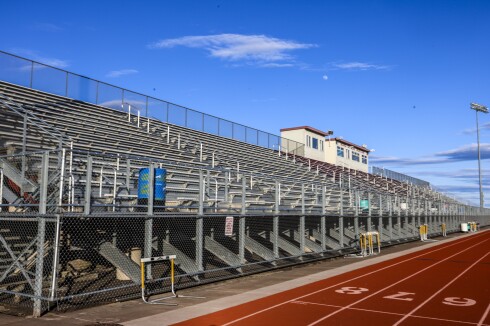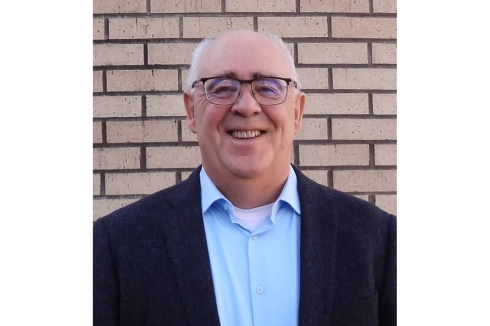ATWATER — A small lake once popular for swimming and fishing is now the site of a pilot project that hopes to revive local recreation.
Nanobubble technology is now at work oxygenating the waters of Tadd Lake in Atwater, Minnesota, roughly 85 miles west of the Twin Cities.
ADVERTISEMENT
Staff with the Middle Fork Crow River Watershed District and a representative of Moleaer, a Los Angeles, California-based company that owns the technology, activated the system on July 3. It will run for approximately three months as a pilot project to demonstrate the ability of this technology to reverse the eutrophication that has made many lakes unsuitable for recreational use.
“This could be an inflection point for the area,” said Dan Coughlin, district administrator for the Middle Fork Crow River Watershed District. He’s hopeful that the demonstration on the 10-acre lake will put to rest any lingering doubts about nanobubble technology.
The watershed district is working with the city of New London in hopes of securing funding to install a larger nanobubble system in the community’s Mill Pond.

For decades, the Mill Pond has been the source of foul-smelling hydrogen sulfide emissions after ice-out in the spring. A lack of oxygen in the water under the winter ice and the century-long buildup of phosphorus and other nutrients in the sediment are to blame. Bacteria that consume the nutrients in the absence of oxygen produce the unhealthy gas.
What’s known as cultural eutrophication, or the hastened buildup of nutrient-rich sediment due to human land practices and activities, has proven to be the bane of Tadd Lake, as well. Its bottom has become a soft muck, and its water is filled with pea soup-like algae and thick mats of aquatic vegetation.
Before the nanobubble system was installed, the watershed district contracted with Lakes Aquatic Weed Removal of Orr, Minnesota, to use an “underwater lawn mower” to remove as much of the lake’s aquatic vegetation as possible. Reducing the organic load in the lake prior to the start of the nanobubble system gives it a jump start, Coughlin explained.

The owners of Lakes Aquatic Weed Removal devoted more than two days — despite flooding back home that kept some of their employees from helping — to removing over 40 truckloads of biomass.
ADVERTISEMENT
The best is now to come. Chris Stephan, a Minnesota native and global director of sales of Moleaer, said residents in Atwater should begin seeing the lake’s water quality improve day by day through the summer months ahead.
It may be a pilot project here, but Stephan said the company’s technology has literally proven itself across the globe. It has more than 1,000 installations in 55 countries.
The system includes a large water pump, an oxygen concentrator, and the company’s patented nanobubble generator. Oxygen is infused into water pumped from Tadd Lake, and the water is run through diffusers in the nanobubble generator. As the water runs through it, the diffusers shear off the nanobubbles.
The oxygen- and nanobubble-rich water is pumped into the lake at the rate of 1,000 gallons a minute. Nanobubbles are microscopic, virus-sized and have no buoyancy. Because of it, the oxygen evenly saturates the entire water column, the bottom included, according to Stephan.
That’s critical, as standard aeration systems do not blanket the bottom sediment with oxygen since their bubbles rise rapidly to the surface.

When the bottom is supplied with oxygen by a nanobubble system, the bacteria in the sediment go to work eating the nutrients. A soft bottom of muck should turn firm. The consumption of phosphorus will starve the algae, clearing the water overall, according to Stephan.
Nanobubble technology has widespread industrial uses, but Moleaer has the only system that scales up for use in bodies of water, according to Stephan. “This is our fastest-growing market system,” he said. “We treat lakes like this all over the world.”
ADVERTISEMENT
Jon Morales and Andy Johnson, program managers with the watershed district, have been analyzing the effectiveness of the systems. They’ve also made this venture an outdoor laboratory by collecting and continuing to collect a wide range of data on water conditions in the lake.
There’s a monitor upstream of Tadd Lake in a small pond recording data on the condition of the water in this control pond. There is another in Tadd Lake itself, likewise monitoring the changes to come.

Coughlin has made this technology the focus of his own research for a master’s program. In simple terms, he said it is about “giving Mother Nature an opportunity to catch her breath and restore a natural balance.”
It will cost a few thousand dollars a month for electricity to operate the system in Tadd Lake, according to Stephan.
If it proves its worth, the watershed district believes it could be put to work in other area waters where excessive nutrient loads are impacting water quality. Diamond Lake, which has seen algae issues due to cultural eutrophication, is among the candidates.























